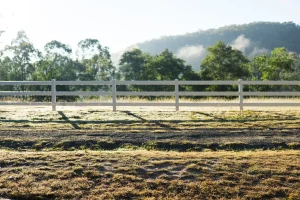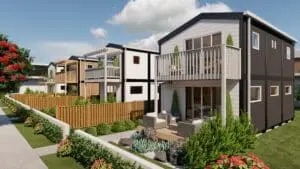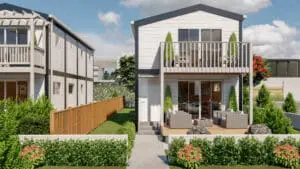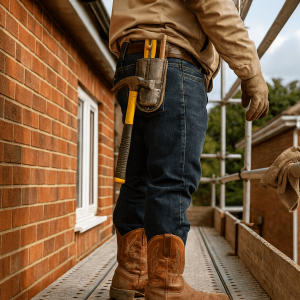When you are looking to fence your residential property, there are several factors to consider. These might include security, privacy, maintenance requirements – and, of course, the effect your fencing will have on the overall aesthetic of your property. Curb appeal is often conveyed as a split-second impression, so in terms of perceived value, your choice of fence material and style you commit to is quite a big deal.
When you build a fence in New Zealand, you also need to consider your neighbours. We have fairly precise requirements regarding shared costs and other factors for fences built on a common boundary line, and if you can’t agree, there is a clear legal process that should be adhered to. Having a congenial conversation in the early stages will save a lot of hassle, so ensure this is a part of your initial planning if it’s applicable.
Once you have the go-ahead, you can choose the best fence material for your home. Here, we have put together some tips to help you decide which approach will suit your needs. We will explore the best materials for residential fencing, compare a couple of different fence material options, discuss low-maintenance fencing materials and the most cost-effective fencing for homeowners – and briefly chat about the best fence materials for privacy.

Best Materials For Residential Fencing
The best materials for your residential fencing will depend on what you are trying to achieve. However, there are some good starting points to help you decide. First, you should consider your home’s architectural style and the materials that feature most heavily on its exterior. While you want to nod to these elements, don’t overwhelm the eye by using too much of the same material.
You can also take your cues from the style of garden you want or have, and you should think about the level of security or privacy you want, as this will definitely dictate the materials you choose. You can utilise a property feature like your roof as a colour guide and paint a wooden fence to match. You might choose glass or concrete for a contemporary home, picket fencing for a classic cottage, or aim to create a juxtaposition with modern corrugated fencing against the backdrop of a wooden villa.
Fences in New Zealand for residential properties can usually be built to a height of 2 metres without securing planning consent from the local council. However, heritage areas and district plans will sometimes have different stipulations, so check them upfront.
Read more: Pool Fencing Tips
Comparing Fence Materials
There is a wide array of options when comparing fence materials, so for the sake of brevity, we will discuss two common options utilised by New Zealand homeowners.
Timber
Due to its versatility and good looks, timber fencing remains a firm favourite with New Zealand homeowners. You could opt for timber fencing in a range of styles, including post-and-rail, lattice top, picket, and basket weave. Each of these options will require a different time commitment from your builder, and you should chat with your contractor about height versus airflow.
There are several different timber choices—including popular options pine and cedar—but the most important thing is to opt for timber that has been treated to ensure longevity and protection from rot. You should be prepared to set up a regular maintenance schedule when you select timber fencing, as it will degrade over time, and a shabby fence can drag down the appearance of your entire property.
Composite Wood Fencing
Composite wood is constructed by blending recycled wood pulp and plastic. The material is fashioned into panels or boards, retaining the warmth of a natural wood appearance with enhanced resistance against rotting, moisture damage, insect infestation, and UV fade. Your composite wood can be utilised like natural wood to produce your desired style choice.

Low-Maintenance Fence Materials
Timber is a durable option for residential fencing, especially if it has been properly treated. With good maintenance and care, you can expect 15 years from your timber fence.
If you are looking for exceptionally low-maintenance fence materials alongside composite wood, you can opt for vinyl fencing, steel fence materials, concrete fencing, or chain link fencing—among others. The best materials for residential fencing are those that balance your style vision alongside the amount of time, energy, and financial investment you are prepared to make across the life of the fence.
Cost-Effective Fencing For Homeowners
When you are assessing the best approach, it pays to do the groundwork. Cost-effective fencing for homeowners will incorporate a number of factors, from the materials themselves to the labour costs and what may be required in terms of ongoing upkeep. You should start by having a New Zealand Certified Builder (NZCB) visit your site to assess the stability of the site for your fence, the gradient, the type of substrate present and any vegetation that may need to be removed or worked around.
Keeping costs down will depend on a professional approach. If you want to use the cheapest materials, just make sure you discuss what this will mean in the longer term with your NZCB professional—cheap upfront may translate to premature replacement and a cost blowout down the line.
Best Fence Materials For Privacy
The best fence materials for privacy will work visually and audibly – and you will likely want to opt for the tallest fence you can afford within local regulations. You could look into brick or stone, opt for wood or composite wood panels, or opt for a contemporary feel with a high steel fence. The height and density of timber fences can effectively block out views and noise, and solid timber fences that are designed with overlapping panels or vertical slats provide excellent privacy.

Get in Touch
If you are ready to make some decisions about your residential fencing options or if you need some more information, the team at NZCB is here to help.
When you use a member of NZCB, you get a trade-qualified builder with a robust record of stability and success – so you also get peace of mind. Get in touch now, and let’s get you the best materials for residential fencing.








